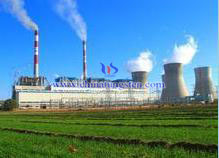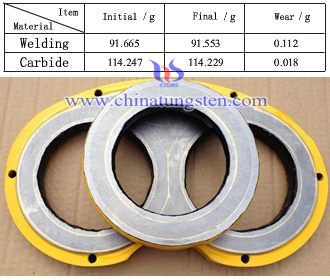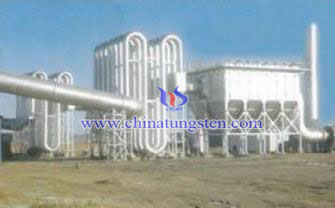Preparing Tungsten Trioxide Contained Denitration Catalyst Active Mother Liquor
- Details
- Category: Tungsten Information
- Published on Friday, 25 March 2016 14:44
- Written by chunyan
- Hits: 245
 Currently, dust removal, desulfurization and denitrification in the flue gas purification process are carried out separately, such as near zero emission technology route in thermal power plant is generally SCR denitration went on with electrostatic dust removal, which is called wet electrostatic precipitator. Nowadays, the most widely used SCR denitration catalysts are almost taking titanium dioxide, zeolites, activated carbon or alumina ceramic honeycomb as the carrier, and tungsten trioxide and vanadium pentoxide as the main active ingredients. SCR denitration catalyst is easy to poisoned to fail in activity. Therefore, how to extend the catalyst life, improve the efficiency of denitration equipment, reduce the overall investment in environmental protection is becoming an important topic. The method to produce denitration catalyst active mother liquor with titania-silica/tungsten trioxide was pointed out, the mother liquor can be applied in a ceramic tube filter to achieve the goal of integration denitrification and dust removal.
Currently, dust removal, desulfurization and denitrification in the flue gas purification process are carried out separately, such as near zero emission technology route in thermal power plant is generally SCR denitration went on with electrostatic dust removal, which is called wet electrostatic precipitator. Nowadays, the most widely used SCR denitration catalysts are almost taking titanium dioxide, zeolites, activated carbon or alumina ceramic honeycomb as the carrier, and tungsten trioxide and vanadium pentoxide as the main active ingredients. SCR denitration catalyst is easy to poisoned to fail in activity. Therefore, how to extend the catalyst life, improve the efficiency of denitration equipment, reduce the overall investment in environmental protection is becoming an important topic. The method to produce denitration catalyst active mother liquor with titania-silica/tungsten trioxide was pointed out, the mother liquor can be applied in a ceramic tube filter to achieve the goal of integration denitrification and dust removal.| Tungsten Oxide Supplier: Chinatungsten Online www.tungsten-oxide.com | Tel.: 86 592 5129696; Fax: 86 592 5129797;Email:sales@chinatungsten.com |
| Tungsten News & Prices, 3G Version: http://3g.chinatungsten.com | Molybdenum News & Molybdenum Price: http://news.molybdenum.com.cn |
Tungsten Trioxide Controls SCR Denitration Catalyst Deactivation
- Details
- Category: Tungsten Information
- Published on Thursday, 24 March 2016 17:26
- Written by chunyan
- Hits: 242
| Tungsten Oxide Supplier: Chinatungsten Online www.tungsten-oxide.com | Tel.: 86 592 5129696; Fax: 86 592 5129797;Email:sales@chinatungsten.com |
| Tungsten News & Prices, 3G Version: http://3g.chinatungsten.com | Molybdenum News & Molybdenum Price: http://news.molybdenum.com.cn |
Tungsten Carbide Wear Plate — Wear Form(2/2)
- Details
- Category: Tungsten Information
- Published on Thursday, 24 March 2016 17:13
- Written by xiaobin
- Hits: 248
Another failure form of tungsten carbide wear plate is solder peeling bore wear. Under the impact of concrete, the surface of the ring alloy plate glasses has cracks, which is due to poor wear resistance of its internal bore, can not fully resist the impact of concrete and wear. Flowing concrete will has relative movement with internal bore of tungsten carbide wear plate, which makes the solid surface and the material properties of the surrounding surface has changed, easily deformed due to uneven force. Therefore, enhanced tungsten carbide wear plate bore is critical and it has enhanced the protection of surface alloy ring and reduces the deformation effect. In order to improve the service life of tungsten carbide wear plate, we can improve the wear resistance of internal bore of wear plate from material and structure.
We have two choices from the material that welding electrode wear and use tungsten carbide directly. By experimental comparison can be drawn with the following electrode wear carbide abrasive wear table:

From the graph above we can clearly see that the wear resistance of tungsten carbide is 5 times better than the welding electrode so that tungsten carbide as the material for the internal bore is a best choice. For the bore structure of wear plate, in order to avoid high temperatures generated inlaid alloy caused defects, the researchers used a related set of inlaid alloy structure, effectively extends the life of tungsten carbide wear plate.
| Tungsten Carbide Supplier: Chinatungsten Online tungsten-carbide.com.cn | Tel.: 86 592 5129696; Fax: 86 592 5129797;Email:sales@chinatungsten.com |
| Tungsten News&Tungsten Prices, 3G Version: http://3g.chinatungsten.com | Molybdenum News & Molybdenum Price: http://news.molybdenum.com.cn |
Waste SCR Denitration Catalyst Recycles Tungsten Trioxide - Secondary Alkaline Leaching Method
- Details
- Category: Tungsten Information
- Published on Thursday, 24 March 2016 17:24
- Written by chunyan
- Hits: 258
 With SCR denitration power being constantly put into the plant large-scale construction projects, at the same time, the waste catalysts are increasing dramatically; on the other hand, the continuous development of science, high-tech demand for tungsten will be rising. Tungsten is a rare metal, the more we use, the less rest. For fully using the limited tungsten ore, recycling tungsten from waste SCR denitration catalyst has became urgent. There are many reachers both at home and abroad committed to study on this subject, and someone has proposed the secondary alkaline leaching method to recover tungsten trioxide, ammonium metavanadate, molybdenum and other precious metal oxides from waste SCR denitration catalysts. Steps are as following:
With SCR denitration power being constantly put into the plant large-scale construction projects, at the same time, the waste catalysts are increasing dramatically; on the other hand, the continuous development of science, high-tech demand for tungsten will be rising. Tungsten is a rare metal, the more we use, the less rest. For fully using the limited tungsten ore, recycling tungsten from waste SCR denitration catalyst has became urgent. There are many reachers both at home and abroad committed to study on this subject, and someone has proposed the secondary alkaline leaching method to recover tungsten trioxide, ammonium metavanadate, molybdenum and other precious metal oxides from waste SCR denitration catalysts. Steps are as following:| Tungsten Oxide Supplier: Chinatungsten Online www.tungsten-oxide.com | Tel.: 86 592 5129696; Fax: 86 592 5129797;Email:sales@chinatungsten.com |
| Tungsten News & Prices, 3G Version: http://3g.chinatungsten.com | Molybdenum News & Molybdenum Price: http://news.molybdenum.com.cn |
Tungsten Carbide Wear Plate — Wear Form(1/2)
- Details
- Category: Tungsten Information
- Published on Thursday, 24 March 2016 17:10
- Written by xiaobin
- Hits: 243
Generally, the medium of tungsten carbide wear plate is concrete, which is composed of cement, water, fine coarse aggregate and other additives and the hardness index converted to a Rockwell hardness of between about HRC40-50. In the process, the main wear forms can be divided into two types, one is in the process of cutting ring reversal, wear plate and floating cutting ring contacts and has grain wear and erosion; the other is in the process of inhaling or pumping, the internal hole of wear plate has low stress wear and erosion.
After concrete pump working for some time, there is a gap between tungsten carbide wear plate and cutting ring. Theoretically, grinding compounds friction and grinding compounds wear of the sliding contact surfaces are generally the form of typical wear. Both wear plate and cutting ring are tungsten carbide and form a pair of friction, the floating cutting ring swings back and forth on tungsten carbide wear plate quickly. Both of them form grain wear by surface contact constantly.
In addition, there are still ore, quartz sand and some other hard particles, and the concrete also belongs to corrosive medium, which will further exacerbate the grinding compounds wear of tungsten carbide wear plate. At present, with the increasing height of the building, pumping height and pressure is also rising, which for carbide glasses plate and cutting ring put forward higher requirements. As time goes by, it will gradually appear larger gaps or partial abrasion between the cutting ring and the wear plate, and leading to failure of the wear plate finally.
| Tungsten Carbide Supplier: Chinatungsten Online tungsten-carbide.com.cn | Tel.: 86 592 5129696; Fax: 86 592 5129797;Email:sales@chinatungsten.com |
| Tungsten News&Tungsten Prices, 3G Version: http://3g.chinatungsten.com | Molybdenum News & Molybdenum Price: http://news.molybdenum.com.cn |





 sales@chinatungsten.com
sales@chinatungsten.com